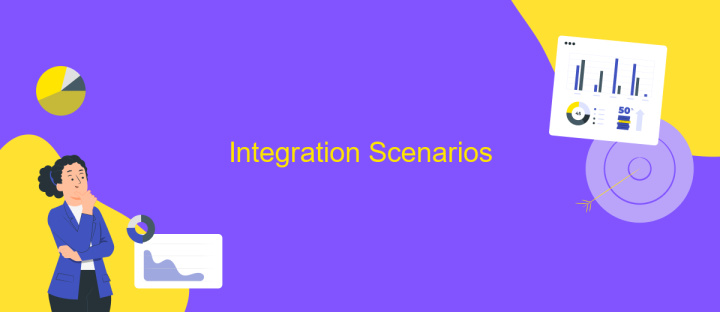Azure Data Factory Integration
Azure Data Factory (ADF) is a cloud-based data integration service that enables seamless data movement and transformation across various sources and destinations. With its robust capabilities, ADF simplifies the process of orchestrating data workflows, ensuring efficient and reliable data integration. This article explores the key features and benefits of Azure Data Factory, highlighting its role in modern data management strategies.
Introduction
Azure Data Factory (ADF) is a powerful cloud-based data integration service that enables seamless data movement and transformation. Designed to handle complex data workflows, ADF provides a scalable and cost-effective solution for ingesting, preparing, and transforming data from various sources. Whether you're dealing with on-premises or cloud-based data, ADF offers a unified platform to orchestrate and automate data processes efficiently.
- Data Ingestion: Collect data from diverse sources including databases, APIs, and file systems.
- Data Transformation: Utilize built-in activities and custom code to transform raw data into meaningful insights.
- Orchestration: Schedule and manage complex workflows with ease.
- Monitoring: Gain real-time visibility into data pipelines and troubleshoot issues quickly.
- Scalability: Scale resources dynamically to handle large volumes of data.
With Azure Data Factory, organizations can streamline their data integration processes, making it easier to derive actionable insights from their data. Its versatility and robust feature set make it an indispensable tool for any data-driven enterprise. By leveraging ADF, businesses can ensure their data is accurate, timely, and accessible, empowering better decision-making and operational efficiency.
Key Concepts

Azure Data Factory (ADF) is a cloud-based data integration service that allows you to create, schedule, and orchestrate data workflows at scale. One of the key concepts in ADF is the pipeline, which is a logical grouping of activities that together perform a task. Pipelines can ingest data from multiple sources, transform it using data flows, and load it into various destinations. ADF supports both code-free and code-centric authoring, making it accessible to users with different levels of technical expertise.
Another essential concept in ADF is the integration runtime, which provides the compute infrastructure used by ADF to perform data movement and transformation activities. There are three types of integration runtimes: Azure, Self-hosted, and Azure-SSIS. Additionally, for more complex integration scenarios, third-party services like ApiX-Drive can be utilized. ApiX-Drive offers pre-built connectors and automation tools to simplify the integration process, allowing seamless data flow between various applications and services. This flexibility makes it easier to manage and automate data workflows, ensuring data is always up-to-date and accessible.
Integration Scenarios

Azure Data Factory (ADF) offers robust integration capabilities, enabling seamless data movement and transformation across various services and platforms. The flexibility of ADF allows businesses to streamline their data workflows, ensuring efficient data management and analysis.
- Cloud-to-Cloud Integration: ADF can connect different cloud services, such as Azure Blob Storage, Azure SQL Database, and other third-party cloud platforms, facilitating smooth data transfer and transformation.
- On-Premises to Cloud Integration: ADF supports hybrid data integration, allowing organizations to move data from on-premises databases and file systems to cloud-based storage and analytics services.
- Data Transformation: With ADF, businesses can transform raw data into meaningful insights using data flows and mapping data transformations, enabling better decision-making processes.
These integration scenarios highlight the versatility of Azure Data Factory in managing diverse data sources and destinations. By leveraging ADF, organizations can ensure their data is efficiently integrated, transformed, and ready for analysis, ultimately driving better business outcomes.
Best Practices

When working with Azure Data Factory, it's essential to follow best practices to ensure optimal performance, maintainability, and cost-efficiency. Proper planning and organization of your data pipelines can significantly impact the success of your data integration projects.
First, design your data pipelines with modularity in mind. Break down complex workflows into smaller, reusable components. This approach not only simplifies debugging and maintenance but also enhances scalability and flexibility as your data integration needs evolve.
- Use parameterization to create dynamic and reusable pipelines.
- Implement error handling and logging mechanisms to monitor pipeline health.
- Optimize data movement by leveraging built-in connectors and parallel processing.
- Regularly review and update your data integration processes to adapt to changing requirements.
- Ensure data security by using encryption and access controls.
By adhering to these best practices, you can maximize the efficiency and reliability of your Azure Data Factory deployments. Continuous improvement and proactive management will help you address challenges and leverage the full potential of Azure Data Factory for your data integration needs.
- Automate the work of an online store or landing
- Empower through integration
- Don't spend money on programmers and integrators
- Save time by automating routine tasks
Conclusion
Azure Data Factory Integration provides a robust and scalable solution for orchestrating and automating data workflows. By leveraging its wide array of connectors and data transformation capabilities, businesses can ensure seamless data movement and processing across various platforms. This integration not only enhances data reliability but also optimizes performance, making it an invaluable tool for modern data-driven enterprises.
For those looking to further streamline their integration processes, services like ApiX-Drive can offer additional flexibility and ease of use. ApiX-Drive enables users to connect various applications and automate data transfers without needing extensive technical expertise. By combining Azure Data Factory with ApiX-Drive, organizations can achieve a more comprehensive and efficient data integration strategy, ultimately driving better business outcomes.
FAQ
What is Azure Data Factory?
How can I automate data integration workflows in Azure Data Factory?
What types of data sources can Azure Data Factory connect to?
How do I monitor and manage the pipelines in Azure Data Factory?
Can I integrate Azure Data Factory with other automation tools?
Apix-Drive is a universal tool that will quickly streamline any workflow, freeing you from routine and possible financial losses. Try ApiX-Drive in action and see how useful it is for you personally. In the meantime, when you are setting up connections between systems, think about where you are investing your free time, because now you will have much more of it.


